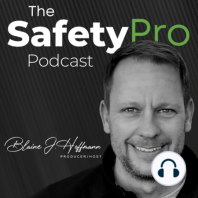33 min listen

083: SMS Pt 4 - What Does ISO 45001 Require?
083: SMS Pt 4 - What Does ISO 45001 Require?
ratings:
Length:
40 minutes
Released:
Nov 11, 2019
Format:
Podcast episode
Description
Powered by iReportSource According to ISO, the purpose of a safety management system is to provide a framework for managing safety and health risks and opportunities. Of course, this means preventing workplace accidents, injuries, and illnesses by recognizing and eliminating or managing risks by taking preventative and protective measures. The structure of ISO 45001 will tell you everything you need to know about how effective safety management systems are set up. Let’s take a look at this SMS at a high-level then get into each element. There are ten areas of focus found in ISO 45001: Scope References Definitions Context of the Organization Leadership and Worker Participation Planning Support Operation Performance Evaluation Improvement I will not get into all of these in great detail but will touch on most to get an understanding of what is needed when considering ISO 45001 for your organization. Let’s just skip to number four since I think you get the scope of why ISO 45001 was created if you listened to the past several episodes. Context of the organization You first need to understand your organization, it’s context, needs, and expectations of the workers. One must also understand what ISO calls “other interested parties,” like vendors, suppliers, contractors, and even customers. The scope is everything around why the company is in business and how the company makes or provides the products or services it offers. In the case of manufacturing, what machines and processes are involved? What chemicals, tools, materials are needed? What trades or special skills are required of workers? What planned or performed work-related activities will be required? The same goes for construction, mining, hospitality, retail, or food industries. Some expectations you will need to identify are going to be legal ones - compliance with laws and regulations. Other expectations will be industry or corporate-driven, such as the case with best practices or compliance with voluntary guidelines, like ISO or ANSI or VPP. All of this will help you determine the scope of the safety management system. So you have to establish, implement, maintain, and continually improve a safety management system. This includes the processes needed and their interactions - and ISO lays those out in 45001. Leadership and Worker Participation This section addresses two of the foundational elements of any safety management system; the leaders and the workers. This relationship is absolutely critical to the success of everything the business does, including safety and health. As for leadership, they need to be committed to the safety management system. Here are some things required to achieve this: Leadership must accept overall accountability for the prevention of workplace injuries and illnesses, as well as establishing a safe work environment and work-related activities. They must ensure that the overall safety and health policy and related goals and objectives are established and compatible with the strategic direction of the company. Leadership must also make sure to integrate the safety management system elements into the rest of the business processes. Leaders must make sure that adequate resources needed to establish, implement, and maintain the safety management system are provided at all times. This includes qualified personnel to contribute to SMS effectiveness. Top leadership must also communicate the importance of effective safety management and compliance with all of the requirements the company has set forth. Ensure the SMS achieves desired outcomes by promoting a continuous process improvement approach. Supporting other management roles so that they may also ensure SMS success. Develop and lead a culture that supports the intended outcomes of the SMS. This means protecting workers from retaliation when reporting hazards, concerns, suggestions, or even just participating in workplace safety activities. Also, by making sure workers are included in the deci
Released:
Nov 11, 2019
Format:
Podcast episode
Titles in the series (100)
023: OSHA Outreach Training Issues: Safety Training vs OSHA Outreach Training by The Safety Pro Podcast